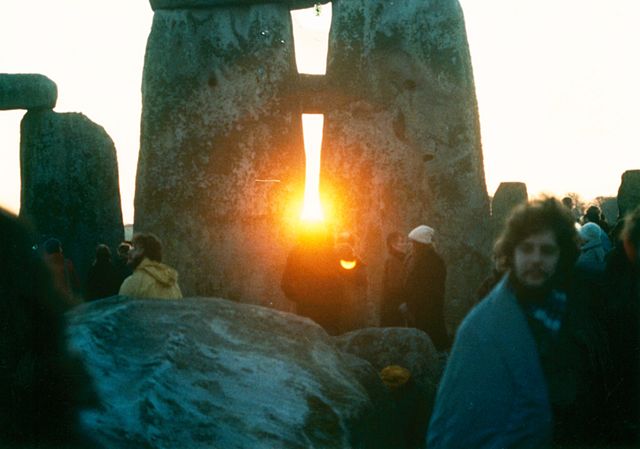From tomorrow, the long dark night gets shorter…literally, at least

Sunrise at Stonehenge on Winter Solstice in the mid-1980s. Photo: Mark Grant. Creative Commons Attribution 2.5.
Today being Winter Solstice, every day from now on will be longer and every night will be shorter. Literally.
One can but hope that there is a metaphorical brightening as well – that the pandemic, for instance, causes less sickness, misery and heartache.
In the meantime, it’s worth taking note of Winter Solstice and what it might symbolise.
** Today the North Pole is tilted farthest away from the Sun, which means the fewest hours of sunlight of the whole year. But tomorrow is another day, a longer one. And the one after that will be longer. And the one after even longer. So on, until June 21, when it will be Summer Solstice in the northern hemisphere. (Interestingly, the winter solstice isn’t always on December 21. It can be any day from December 20 to 23.)
** Winter Solstice happens at the same moment for everyone, everywhere on the planet (this year, at 10:02 GMT in the Northern Hemisphere). So it shows the interconnectedness of our destinies – we are, literally, in this together.
** Winter Solstice is marked all over the world in various ways. In the UK and Ireland, pagan and druid communities dress in traditional costumes. Druids congregate at Stonehenge, the pre-historic monument in Wiltshire. In the Scandinavian countries, people light fires on the Feast of Juul to symbolise the returning heat and light of the sun. Iranians celebrate Yalda. Guatemala’s Mayan Indians engage in Palo Volador, or the “flying pole dance”. That disparate people around the world had the same idea also underlines how much we’re kin.

